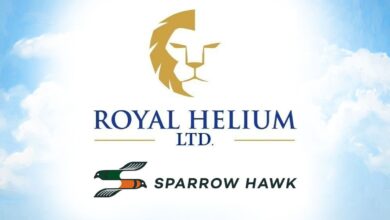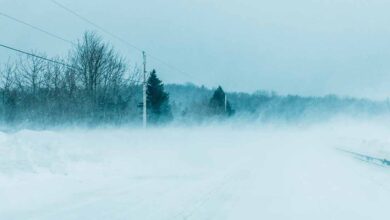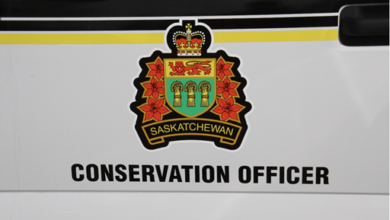
Brush Control on Pastureland
By Kelly Cochrane, PAg, Range Management Extension Specialist, Weyburn
As we move into the winter grazing season, now may be a good opportunity to evaluate your pastureland. Are there overused or underused grazing areas? Do the underused areas correspond with dense tree or shrub cover? Having a management plan to control woody vegetation is one way to increase forage use and production.
Woody vegetation or brush is often used to describe trees and shrub growth. When discussing brush, we most often refer to trembling aspen and western snowberry as these two species are the most common on Saskatchewan pastureland. While overlapping territory of these species exists, trembling aspen is more commonly found in the central and northern regions of the province while western snowberry is more commonly found in the southern regions.
Brush can play an important ecological function but without natural controls, such as fire or historical bison grazing to keep brush species in check, grasslands can become degraded. Overtime the canopy cover can choke out forage species which reduces biodiversity, carrying capacity, wildlife habitat and overall aesthetics. Brush can also create ideal conditions for invasive and weed species such as Kentucky bluegrass and Canada thistle, displacing native or seeded forages. Brush encroachment is a slow process that over time can lead to considerable economic impact by decreasing the amount of forage available or accessible and thereby compounding future brush control costs.
The brush control strategy may change from one location to another. Consideration needs to be given to the particular brush species, soil and environmental conditions and any previous weed control options used in the past. Brush control treatments can include mechanical, chemical, grazing and burning. Each treatment on its own can be effective but an integrated approach that combines treatments have shown to be most effective.
When considering brush control treatments, evaluate the treatment costs against the potential short-term and long-term forage yield increases on the pasture. Forage yield increases following brush control vary by woody species and ecoregion. A study in east central Saskatchewan has shown that control of trembling aspen had a five-year average forage yield increase following treatments of clearing, herbicide application or combination with multiple year applications. Forage yield increases have been noted following similar western snowberry treatments with multiple year applications.
When making a brush control plan be prepared to complete treatments in stages or multiple years to achieve long-term control. Piece-meal treatments are not recommended. Species such as western snowberry and trembling aspen cannot be controlled with a single treatment. Producers need to be prepared to monitor and apply additional treatments as required. It is important to select brush treatments that fit into your current management and budget and will increase or maintain long-term forage value.
Currently the Ministry of Agriculture’s range management extension specialists are evaluating various brush control options on aspen, snowberry and wolf willow across six different regional sites within the province. Each of the site locations has taken a slightly different control strategy based upon the brush species found at that particular location. Results will be reported on in the fall of 2021.
If you have any questions regarding brush control options, treatments or general forage management reach out to your regional range management extension specialist or call the Agriculture Knowledge Centre at 1-866-457-2377.
For the latest information and for more updates on everything Kindersley ‘Like’ the Kindersley Social Facebook page below…








































